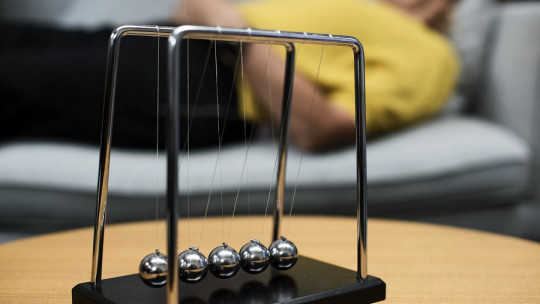The thought stopping technique, also called blocking or thought stopping was invented by Bain in the 1920s, and adapted and developed by Wolpe in the late 1950s. It is an effective self-control technique to reduce or avoid ruminative thoughts.
In this article we will learn exactly how it is applied, its characteristics and the objectives pursued by the technique.
Thought stopping technique: what does it consist of?
The thought stopping technique consists of interrupting ruminative thoughts through an associated word. In other words, and according to Wolpe, the person is trained to end up excluding any ruminative thoughts (undesirable or unproductive) even before its formulation.
All of this leads to reducing the chain of thoughts that are accompanied by negative emotions; Thus, negative emotions are “cut off” before they can arise.
ruminative thinking
The thought stopping technique is a type of exercise that is applied when we have ruminative thoughts (rumination), that is, when we think about things without reaching conclusions, only reviewing in detail what worries us in a totally dysfunctional way. (since we don’t get solutions, we just “think” in a kind of vicious circle.
In other words, ruminative thoughts are unwanted thoughts that continually repeat in our heads and lead to unpleasant sensations ; They even affect our mood. The ruminative thinking style is common in some disorders such as depression.
How is it applied in therapy?
The thought stopping technique consists of the following: first, when we are at the beginning of rumination, we must go to a quiet space where we cannot be disturbed (for example a room). This is recommended the first few times, but When we have already acquired the practice, it will not be necessary to “isolate” and we will be able to put the thought stopping technique into practice in almost all environments or contexts.
Once alone and calm, we will dedicate ourselves to thinking intentionally (or unintentionally, letting it “flow”) about that thought that disturbs us so much. We will try to focus on it, instead of trying to avoid it ignore it or run away from it.
Keyword
We will focus our attention on it (even if our anxiety rises), and stay that way for at least a minute. Just at the moment when the thought is at its “peak” moment and/or the anxiety or fear is intense or even unbearable, we will shout loud and loud the word “Stop!” or “Enough!”
You can also use other words that help us; The important thing is that when we say it we realize that all those thoughts in our mind stop. It is the ultimate goal that the action of shouting “X” word is associated with the stopping of thought
Repetitions
Once we carry out the procedure, we will leave the room or place where we are. If the thought stopping technique is applied correctly and systematically, little by little we will realize that after shouting the word, we feel slightly more relaxed and that the thoughts have really stopped.
It is also about being constant and acquiring some practice; The mind must get used to it and associate these two actions.
After all this, we will have to re-enter the room or place we have chosen, and repeat the process. This time, we’ll say the word in a slightly lower tone. We will repeat the process, entering and leaving the room, and getting smaller and smaller.
If the thought stopping technique goes well, In the end we won’t even need to say the word out loud anymore we can even think about it, having the same effect of stopping thought.
Generalization
The more we practice the technique, the more likely it will be that the association between the thought and its stopping by shouting, saying or thinking the key word will occur.
The time will come when we can carry out the thought stopping technique without anyone around us noticing , in situations such as in public spaces, in meetings, at dinner with friends, driving, etc. We can even do it unconsciously. In the end it will be our mind that reacts like this without having to “give it orders”, when it understands that it has started a thought loop.
Goals
Through the thought stopping technique, we can either reduce the frequency and/or duration of our ruminative or obsessive thoughts, or eliminate them altogether or make them less intrusive
If we achieve any of these three things, it is likely that our quality of life and our psychological well-being will increase, thus allowing us to enjoy our daily lives more and even be able to focus on work or other things that interest us.









